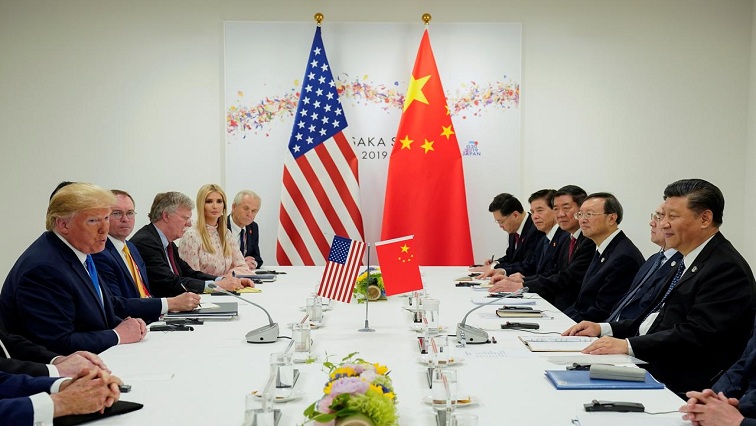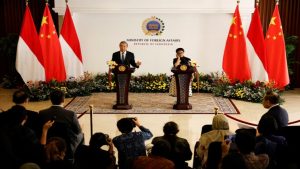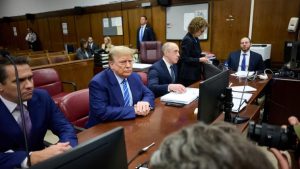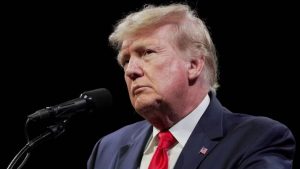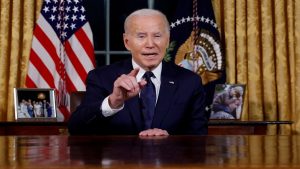Chinese and United States (US) negotiators held their first face-to-face talks Wednesday since agreeing to a trade war truce last month but the short meeting in Shanghai was overshadowed by a Twitter tirade from President Donald Trump.
Washington and Beijing have so far hit each other with punitive tariffs covering more than $360 billion in two-way trade in a row centred on demands for China to curb the alleged theft of American technology and provide a level playing field to US companies.
US Trade Representative Robert Lighthizer and Treasury Secretary Steven Mnuchin shook hands and exchanged pleasantries with Vice Premier Liu He Wednesday morning.
The group then went behind closed doors for around four hours in the first face-to-face negotiations since Trump agreed to a truce with his Chinese counterpart Xi Jinping in June following a breakdown a month earlier.
The talks were relatively brief and the group emerged later, a little earlier than expected, for a group photo before the US trade officials left for the airport without speaking to reporters.
Lighthizer and Mnuchin arrived in Shanghai on Tuesday and joined Chinese officials for dinner and informal discussions, just as Trump took to Twitter to lambast what he said was a lack of willingness by Beijing to broker a fair deal.
“My team is negotiating with them now, but they always change the deal in the end to their benefit,” Trump wrote Tuesday.
This time the US leader said Beijing was supposed to start buying US agricultural products but they have shown “no signs that they are doing so”.
“That is the problem with China, they just don’t come through,” he added.
Trump had previously accused China of reneging on its commitments when previous talks broke down in May.
Analysts said his remarks would do little to ease the already-tense relationship between Washington and Beijing.
“Whatever shred of optimism markets had about the ongoing trade negotiations were dealt as a severe blow when President Trump flew off the handle again,” said Stephen Innes, managing partner at VM Markets Singapore.
“(The tweets show) Trump seems eager to get a deal, that shows his weakness,” said Shanghai-based professor Shen Dingli.
A commentary in the Communist Party mouthpiece People’s Daily on Wednesday, while not mentioning Trump by name, complained that as the talks started, “the drums of some Americans struck again on the side, disturbing the main melody”.
Days before the Shanghai meeting, Trump threatened to pull recognition of China’s developing nation status at the World Trade Organization, which Beijing called “arrogance”.
Expectations were already low before the talks, although and analysts predicted that little of substance would be announced.
“The short duration of the current meeting to me suggests that this is exploratory,” said J. Michael Cole, a Taipei-based senior fellow with the Global Taiwan Institute in Washington.
“It signals that no major breakthroughs are expected and that the expectations of achievements are modest at best.”
Officials on both sides were keeping a low profile throughout their Shanghai trip.
US trade negotiators entered and left their hotel on Shanghai’s waterfront through side doors without going through public areas, and did not stop to speak to the press or show their faces.
Trump said last week he believed Beijing was hoping to delay a deal until after the US presidential election in November 2020, saying China wanted to see if a Democratic opponent wins the vote so it could “continue to rip off the USA”.
“He (Trump) can’t afford politically to step up and say ‘I made a great deal with China’ when it’s not a great deal,” said Derek M. Scissors, resident scholar at the American Enterprise Institute.
“So the most likely outcome is we get nothing until the election.”
However, the trade war is taking its toll on both sides.
In a report published Wednesday in official news agency Xinhua, The Political Bureau of China’s Central Committee warned of “new risks and increasing downward pressure” on the Chinese economy.


